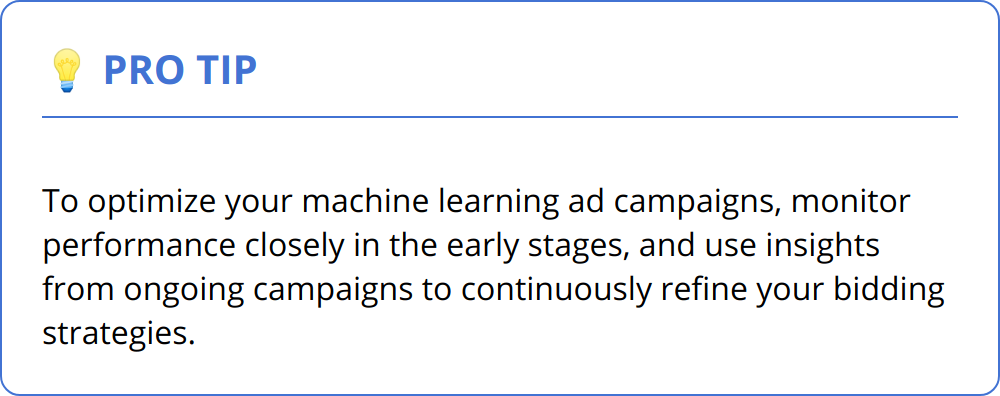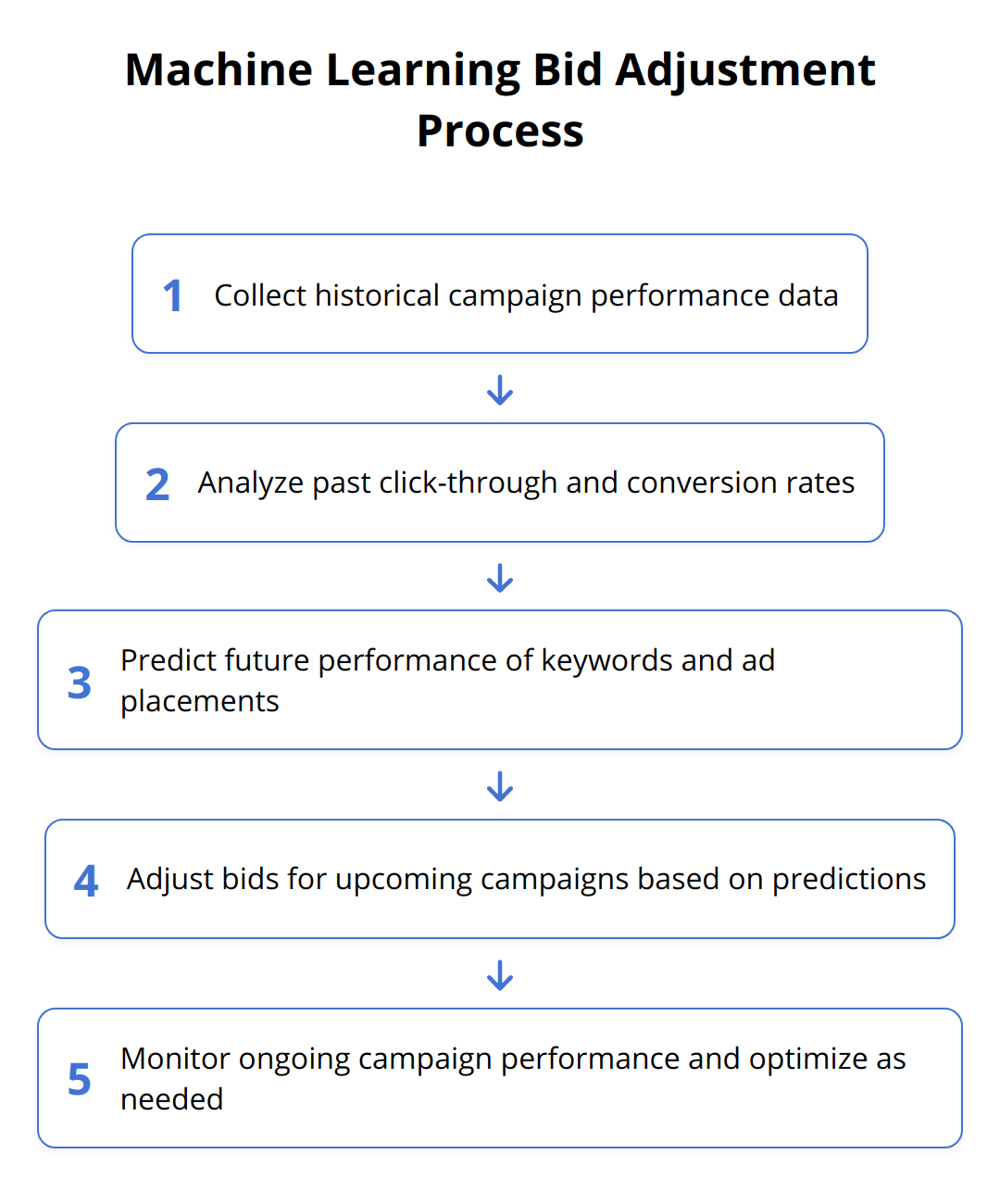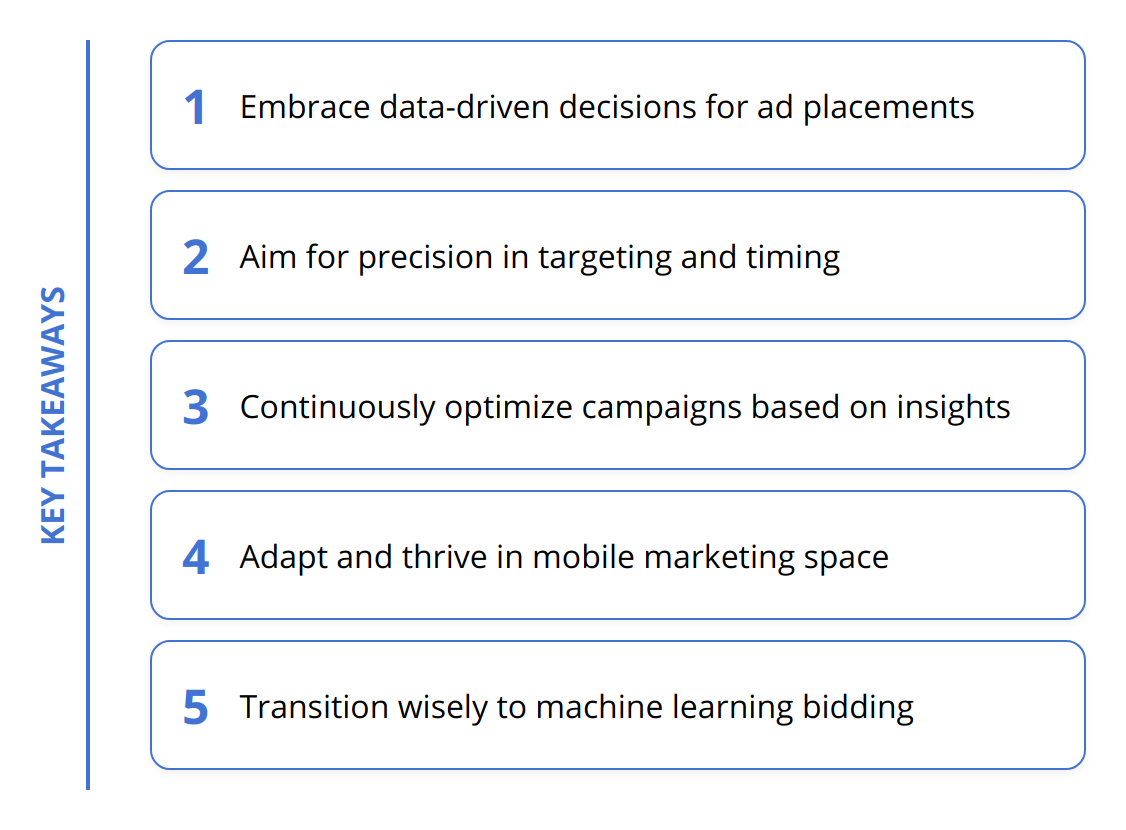Advertising has always been about reaching the right person at the right time with the right message. But with the integration of machine learning into ad bidding, that concept has evolved significantly. We at Emplibot understand that navigating this complex field can be challenging, yet mastering it can lead to exceptional ad performance and optimization.
This blog post will guide you through the crucial strategies and best practices, backed by concrete data and experiences, to embrace machine learning in your ad bidding efforts for improved results.
Contents
ToggleHarnessing Machine Learning for Smarter Bidding
When it comes to ad bidding, machine learning is a game-changer. It upgrades the process from gut-feeling guesses to data-driven decisions, leading to ads that not only appeal to the audience but also arrive at the moment they’re most likely to engage. Machine learning revolutionizes ad performance by consuming vast amounts of data, recognizing patterns, and making informed bidding decisions at a speed and scale that’s humanly impossible.
The secret sauce lies in its ability to predict the value of each ad impression based on historical data analysis and real-time contextual signals. By doing so, it allows for precise targeting and optimal bid placement, enhancing the likelihood of ad engagement and conversion.

Key Benefits for Ad Performance
Here’s how machine learning elevates ad bidding:
-
Improved Efficiency: Manual bidding can be draining and inefficient. Machine learning, on the other hand, automates the process, freeing up time for marketers to strategize and create compelling ad content.
-
Optimized Spending: It’s not just about bidding more; it’s about bidding smart. By predicting the right price for every ad impression, machine learning ensures that your budget is spent on high-value bids that are more likely to convert.
-
Enhanced ROI: With better targeting and timing, ads placed through machine learning bidding often see a higher return on investment. This is because the system can find the sweet spot between cost and conversion, driving more favorable outcomes.
A Leap From Traditional Bidding
Traditional bidding methods often involve setting a uniform bid across a campaign, resulting in a one-size-fits-all approach. Machine learning bidding, however, delivers personalized bid adjustments for individual ad spots. It assesses a multitude of factors, such as the user’s device, location, time of day, and previous online behavior, to determine the optimal bid.
Moreover, intelligent bidding systems like Google’s Smart Bidding are rooted in machine learning algorithms. For instance, predictive analytics in marketing become a powerful asset when integrated with Smart Bidding, leading to an average increase in conversion value by around 35%.
Here are some actionable insights to help you leverage machine learning in your ad bidding:
-
Gather Sufficient Data: The more quality data you feed the algorithm, the better your bidding outcomes will be.
-
Test and Learn: Start with a specific machine learning bidding strategy such as Target CPA or Maximize Conversions. Evaluate performance and iterate.
-
Monitor Frequently: Keep an eye on your campaigns, especially in the early stages of machine learning integration.
-
Optimize Continuously: Use insights from ongoing campaigns to refine your bidding and targeting strategies.
Machine learning in ad bidding isn’t just a passing trend; it’s transforming the advertising landscape. Those who harness its potential stand to outperform competitors significantly. By integrating machine learning into your campaigns, you’re not just placing ads; you’re making strategic investments in each ad placement. With machine learning, every dollar spent is a step towards greater digital marketing triumph.

Optimizing Bids with Machine Learning
Machine learning in ad bidding is a robust tool for achieving your ad campaign goals. To utilize this effectively, understanding and using Smart Bidding options within Google Ads can take the performance of your campaigns to new heights. At the heart of it, defining clear advertising objectives and expertly applying strategies like Target CPA and Target ROAS are foundational to campaign success.
The Power of Smart Bidding
Google Ads Smart Bidding harnesses machine learning to optimize your bids in real time. This means better results in terms of conversions and costs. For example, when you utilize Target CPA, you set the average amount you’re willing to pay per conversion, and Google’s algorithms adjust your bids to meet that target. This is not about slashing costs indiscriminately; it’s about spending efficiently to drive high-value conversions.

Then there’s Target ROAS, which can pivot your campaign to focus on the value of conversions rather than their volume. It’s an intelligent way to ensure your ads generate revenue that aligns with your business goals. A knitwear e-commerce vendor applying Target ROAS could reap the rewards of reaching customers more inclined to purchase multiple items, thereby increasing the average value per sale.

Defining Your North Star
Your campaign’s North Star metric should be its driving force. Are you aiming for brand awareness? Website traffic? Conversions? Knowing this shapes your strategy and clarifies which bidding model aligns with your KPIs. Without clarity here, you risk misapplying machine learning tools, and that’s a surefire way to dilute your results.
Achieve Precision with Targeting
Placement is just as important as pricing. You want to target users who are most likely to convert and have the highest predicted lifetime value. This involves more than setting the right bid; it’s about understanding the user’s intent, behavior, and your content’s alignment with their needs. As machine learning processes data from different touchpoints, it provides insights that can fine-tune your targeting to an impressive degree.
Tips for Campaign Optimization
To really nail machine learning ad bidding, consider the following:
-
Start with a robust dataset. A rich history of campaign data helps machine learning algorithms make more accurate predictions.
-
Switch gradually. If you’re using manual bidding, test machine learning bidding with a portion of your budget to understand its impact without risking it all.
-
Check and adjust. Regularly review your campaigns to ensure goals are still in sync with your bidding strategies.
Ultimately, making strategic use of machine learning in ad bidding requires a blend of technology and marketing acumen. It’s not a magic button—you need to monitor and tweak your campaigns actively. Businesses on top of their game apply these tools to maximize ad performance, leaving competitors who rely on outdated methods behind.
In the next section, we’ll explore specific machine learning ad bidding strategies to help sharpen your campaign’s competitive edge. Keep your goals front and center, and let machine learning amplify your potential to reach and convert your ideal audience.
Maximizing Ad Bidding with Machine Learning
The integration of machine learning into ad bidding strategies has undeniably revolutionized performance metrics. For any marketer looking to boost their ad success, understanding this technology is not just an advantage — it’s absolutely essential.
Machine learning ingests performance data from past campaigns to sharpen future bid precision. It’s a powerful tool that adjusts bids for maximum performance, ensuring that advertisements reach potential customers effectively, without overspending. Additionally, by analyzing user behavior and contextual data, machine learning enables a more nuanced and targeted bidding approach.
So, what’s the real-world impact of machine learning on ad performance? Let’s dive into the actionable insights:
Insightful Data Analysis for Peak Performance
Analysis of performance metrics using machine learning goes far beyond mere guesswork. The data speaks volumes. For instance, marketers experienced heightened conversion rates with the applications of machine learning ad bidding strategies. If your current bidding strategy isn’t leveraging machine learning algorithms, you’re likely leaving money on the table.
Performance metrics such as click-through rates, conversion rates, and cost per acquisition all see significant enhancements with machine learning applications. Historical data help predict the future performance of keywords and ad placements, paving the way for smarter, more cost-effective campaigns.

Pivotal Conversion Value Boost from Smart Bidding
Smart bidding strategies such as Target CPA and Maximize Conversions are more than just buzzwords. They mean serious business results. Using machine learning algorithms, marketers have observed upwards of a 35% increase in conversion value. This is a testament to machine learning’s ability to strategically bid on the impressions that matter most.
Take, for example, the case of a major retail brand that switched to machine learning-based smart bidding. By targeting users predicted to be at the later stages of the purchasing funnel, the brand saw a substantial increase in conversion rates while maintaining an impressive return on advertising spend.
Setting Strategic Targets for Healthy Conversion Rates
When machine learning takes the wheel in ad bidding, setting realistic and strategic targets becomes critically important. Here’s how you can keep your conversion rate in tip-top shape:
-
Establish clear conversion rate targets that align with your overall marketing objectives.
-
Maintain consistency in your targeting to foster a reliable baseline for machine learning predictions.
-
Regularly adjust and fine-tune bid targets based on ongoing performance analysis.
-
Always factor in the customer lifetime value, not just immediate conversion rates.
For marketers ready to modernize their approach, the message is loud and clear: machine learning in ad bidding is no longer optional for those aiming to stand out in the digital space. Remember, success in smart bidding doesn’t come from automation alone. Hand-in-hand with machine learning, it’s your insight and oversight that will drive those vital KPIs upwards.
In our further exploration of machine learning in advertising, we will discuss essential strategies and tools that can help elevate your campaigns and ensure that you’re investing in the most effective ad placements. Be ready to embrace these next-gen techniques for a more dynamic and rewarding ad bidding environment.
Harnessing Historical Data for Bidding Precision
Streamlining your ad bidding with machine learning starts with data – not just any data, but the right historical data. High-quality historical data is the lifeblood of machine learning models, enabling them to analyze trends and outcomes effectively. This data should be relevant, comprehensive, and, above all, clean. It includes everything from past bid information to conversion metrics across various devices and platforms. Accurate data leads to more precise machine learning predictions, ensuring your ad dollars are spent where they count the most.
Optimization is key in ad bidding. And when it comes to mobile, it’s a whole different ballgame. Mobile optimization is mandatory, as a significant segment of web traffic comes from mobile devices. Machine learning algorithms are equipped to tackle this by adjusting bids in real-time based on device performance data, making sure that your mobile ads are as effective as their desktop counterparts.
Switching from manual to machine learning bidding has its challenges, but careful planning and implementation can prevent common pitfalls. It’s essential to:
-
Gradually introduce machine learning bidding to parts of your campaigns before fully committing.
-
Always keep a close eye on the performance during the initial phase and make necessary tweaks.
-
Stay updated with market trends to align your strategies accordingly, such as keeping tabs on the latest in predictive analytics marketing.
A strategic approach to employing machine learning involves mindful preparation and ongoing management. It’s not a set-it-and-forget-it deal. You must be ready to adapt and evolve with the data-driven insights provided by your machine learning tools.
Mastering Mobile Adaptation in Bidding
The mobile revolution is not on the horizon; it’s here, and it’s reshaping ad bidding strategies. Machine learning strongly factors in mobile usage patterns and user behavior, offering optimized bids that reflect the diverse ways in which consumers engage with ads on mobile.
To ensure that you’re not missing out on the mobile audience, these steps are vital:
-
Analyze and understand how different mobile devices interact with your ads.
-
Create device-specific ad content that resonates with mobile users’ expectations.
-
Adjust bids for mobile ad placements by understanding the nuances of mobile user engagement.
Mobile optimization is not an option but an imperative. Ignoring it can lead to missed opportunities and wasted ad spend.
Navigating Machine Learning Bidding Transitions
Transitioning to a machine learning-driven bidding strategy can seem daunting, but with the right approach, it’s a move that can significantly enhance your ad campaigns. Here’s the lowdown:
-
Start small and scale up. Transitioning a portion of your budget allows you to compare performance against traditional methods without significant risk.
-
Keep a close watch on your campaigns as they run under the new bidding system and be prepared to intervene if things don’t go as planned.
-
Iterate your strategies based on real-world performance data and not just theoretical outcomes.
By following these practical tips, you’re positioning yourself to reap the full benefits of machine learning in ad bidding. Always remember that the goal is not just to automate the bidding process but to execute smarter, more data-informed bidding strategies that can adapt dynamically to the ever-changing digital advertising environment.
In summary, prepare your historical data foundation; tap into the mobile market with tailored strategies and approach the transition to machine learning bidding with a test-and-learn mentality. These steps will guide you towards a smarter, more efficient bidding strategy that leverages the full power of machine learning.
Wrapping Up
Diving into the dynamic world of ad bidding, it’s evident that machine learning has forever altered the advertising landscape. We’ve explored its transformative impact on campaign efficiencies and how it turns vast amounts of data into actionable insights for successful ad placements. Machine learning’s smart algorithms are enhancing the way advertisements reach potential customers, increasing conversion rates, and driving ROI without stretching your budget thin.

Machine learning ad bidding offers a spectrum of benefits, which include amplifying the preciseness of your ad targeting, optimizing your ad spend to reach high-value impressions, and providing a more strategic angle to your bidding decisions. The era of guessing and manual adjustments is being overshadowed by real-time, data-informed adjustments that account for numerous factors, all aimed at delivering ads to the most receptive audiences.
Now, more than ever, it’s essential for advertisers to tap into these powerful machine learning tools. With the ability to read into past performance data and harness it for future campaigns, advertisers can expect not just incremental but potentially exponential improvements in their bidding strategies. By refining these approaches, businesses can ensure that their advertising efforts are not just seen but also significantly impact consumer behavior.
At Emplibot, we stand at the forefront of this revolution, offering a suite of solutions that streamline digital marketing processes. Our platform can help businesses maintain their competitive edge by publishing SEO-friendly articles to their WordPress sites automatically. This automation extends to in-depth keyword research, image inclusion, and internal linking, building a robust blog presence without the heavy lifting.
If you’re ready to step up your ad bidding tactics, it’s time to embrace machine learning. By investing in these next-gen ad technologies, you’re ensuring that your marketing dollars have the maximum effect. You’ll not only stay ahead of the curve but also witness tangible improvements in ad performance, user engagement, and return on investment.
The takeaways from our deep dive into machine learning ad bidding should be clear:
-
Embrace data-driven decisions for ad placements
-
Aim for precision in targeting and timing
-
Continuously optimize your campaigns based on insights
-
Adapt and thrive in the mobile marketing space
-
Transition wisely and iteratively to machine learning bidding
Armed with these insights and a powerful tool like Emplibot, advertisers are set on a path toward enhanced ad performances. In a landscape rich with data and guided by intelligence, machine learning ad bidding is not just an option—it’s the key to unlocking your advertising potential.










 Rated Excellent 4.5
Rated Excellent 4.5